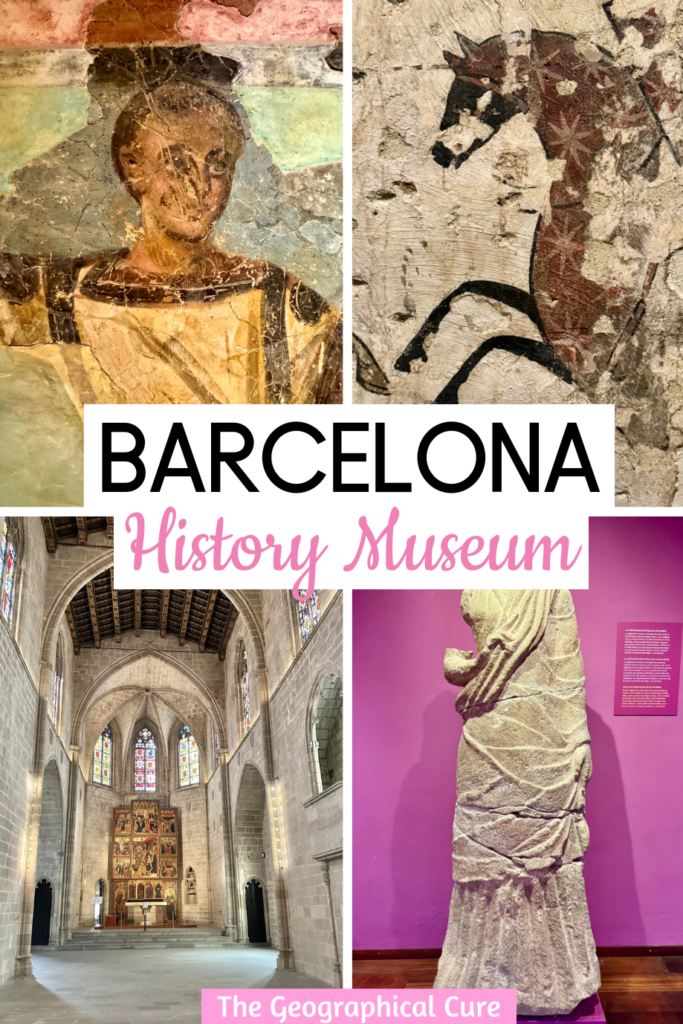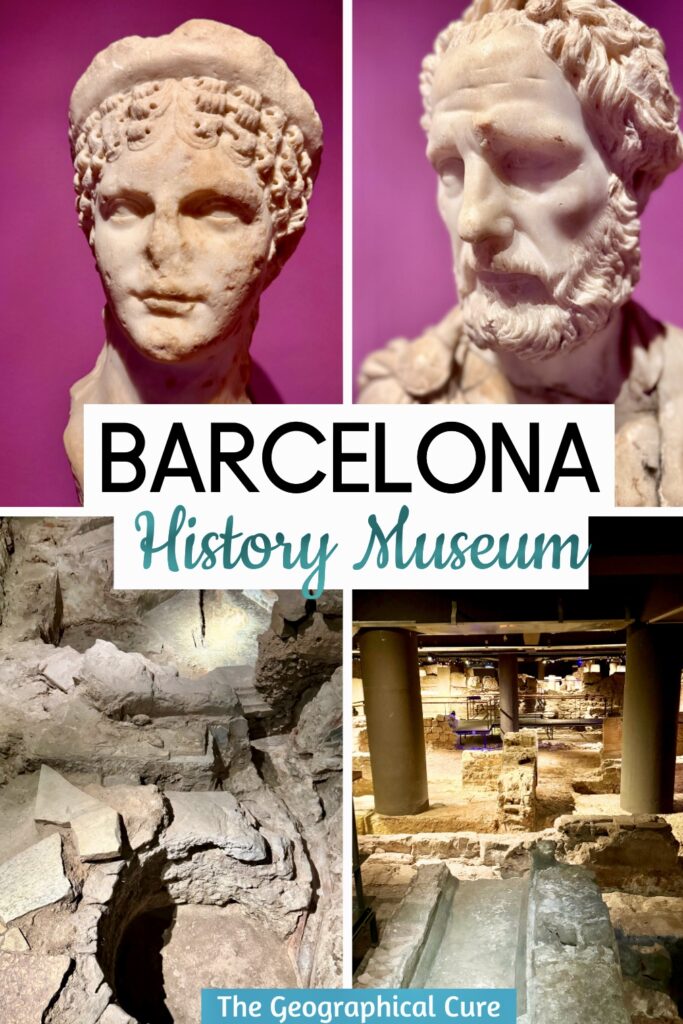If you’re a history buff or ruin luster visiting Barcelona, be sure to put the city’s Museu d’Histoire de Barcelona (“MUHBA”) on your itinerary.
Just off the Place del Rei is the entrance to the Casa Pedallas, a 15th century mansion through which you enter the museum.
It’s a history and archeological museum, with zero crowds.
There’s an extensive collection of artifacts and exhibits that trace the city’s evolution from its ancient Roman roots through the Christian era to the medieval era.
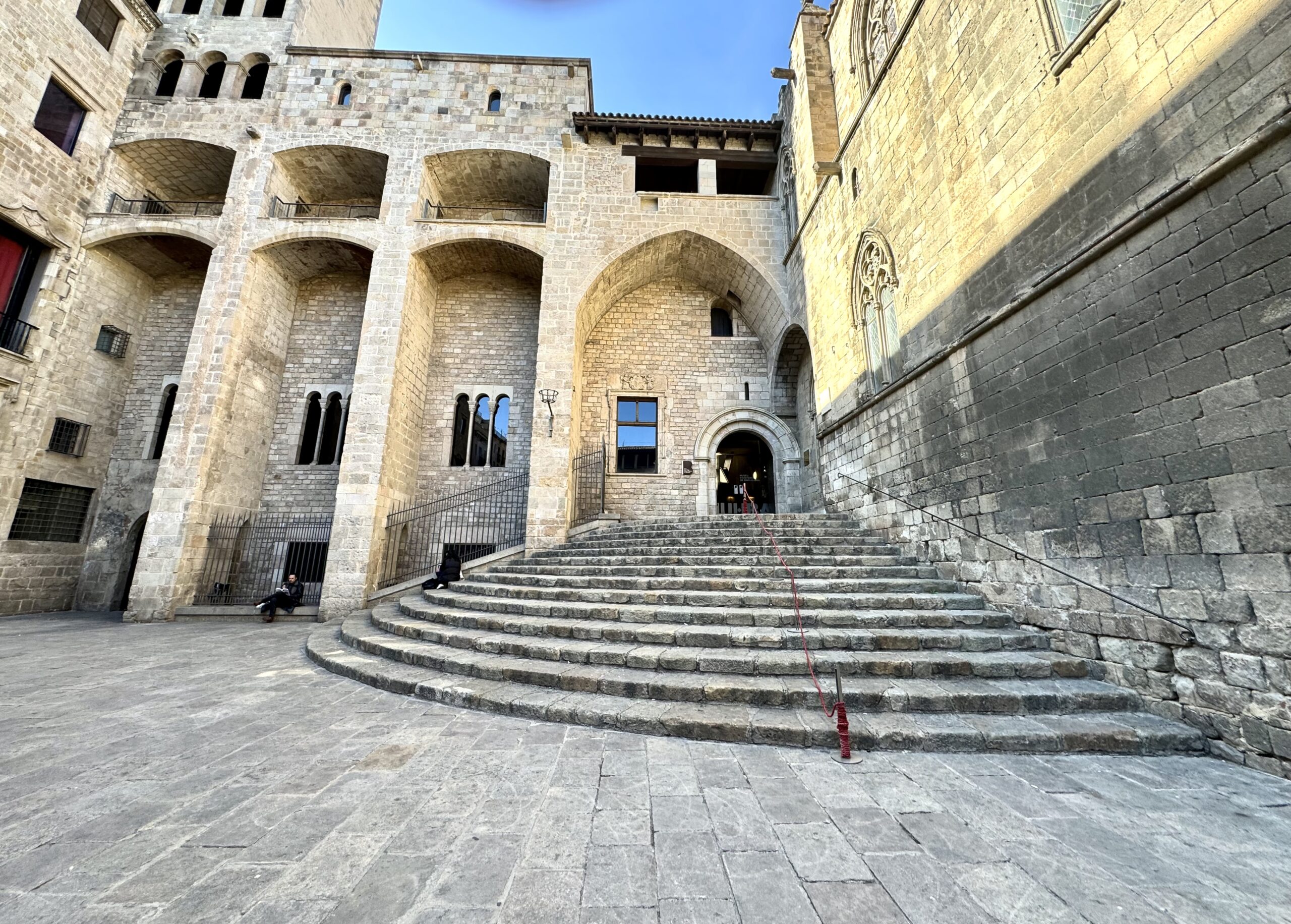
The museum features underground Roman ruins, medieval buildings, and detailed multimedia displays. The history is so strong you can smell it!
Quick Tips
- unless it’s summer, you won’t need to pre-book a ticket
- plan to spend 2 hours
- after you peruse the first floor, take the elevator down to the Roman ruins and work your way back
- it’s dark and hot in the area of the ruins (no AC)
The floor plan is as follows:
- ground floor: reception, courtyard of the clock & bookshop
- first floor: city wall viewpoint, temporary exhibitions
- 2nd and 3rd floor: history of Barcelona and Roman ruins
- 4th floor: Gothic Quarter viewpoint
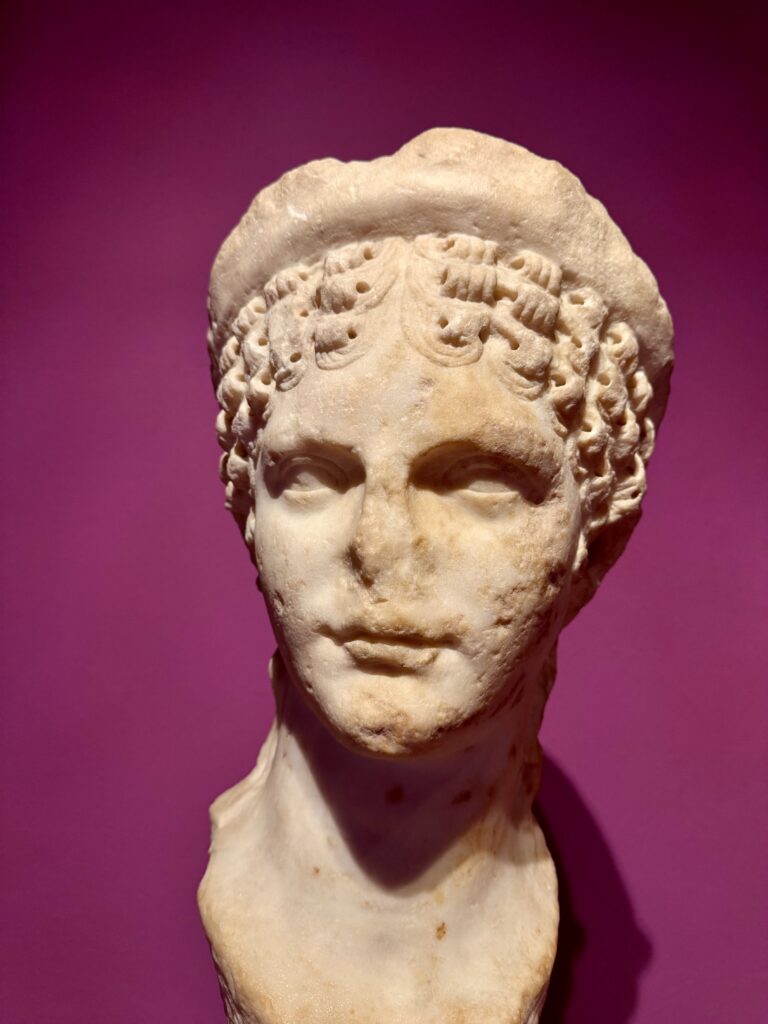
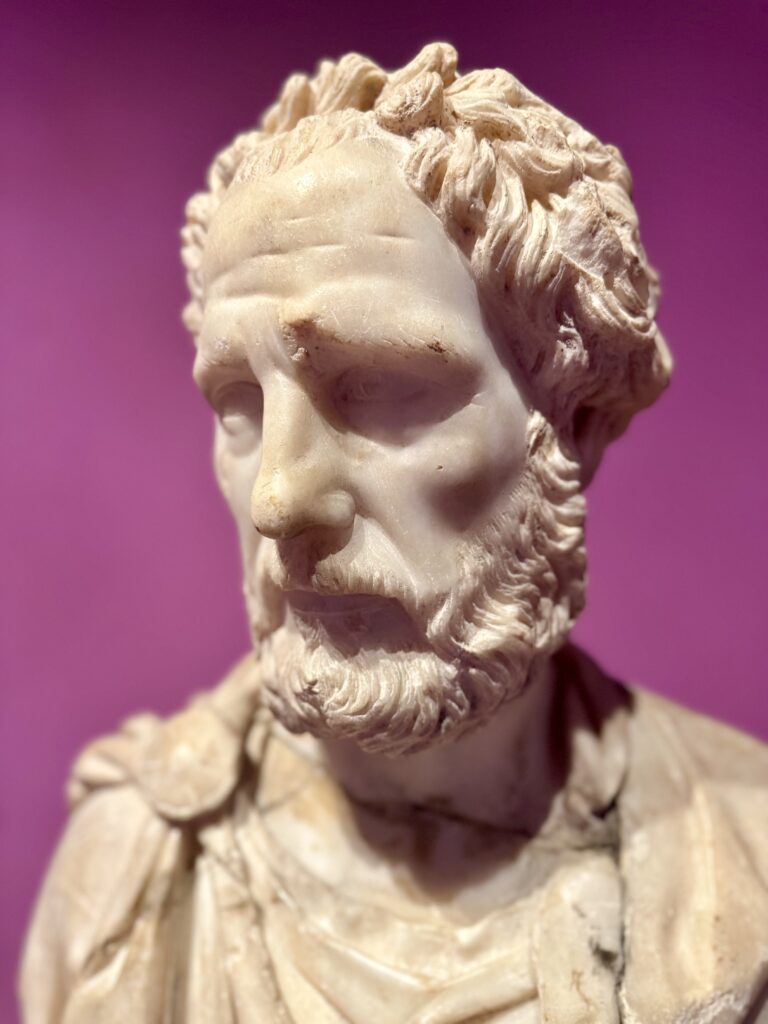
What Was Barcino?
Barcino was a small Roman colony founded in the 1st century B.C by the Emperor Augustus. Over four centuries, it developed a solid economy.
Though it was a small colony, it was strategically important due to its location on the Mediterranean coast. Barcino was surrounded by a defensive wall, parts of which can still be seen today in the Gothic Quarter.
The city had a typical Roman layout with a rectangular grid plan, forum, temple, and baths.
Roman Barcino was relatively prosperous, as evidenced by the remains of mosaic floors and necropolis sites discovered in the area.
The city exported wine and imported products for its inhabitants. Imports of amphorae and fine ceramics from different workshops around the Mediterranean enable the city’s trade routes to be plotted.
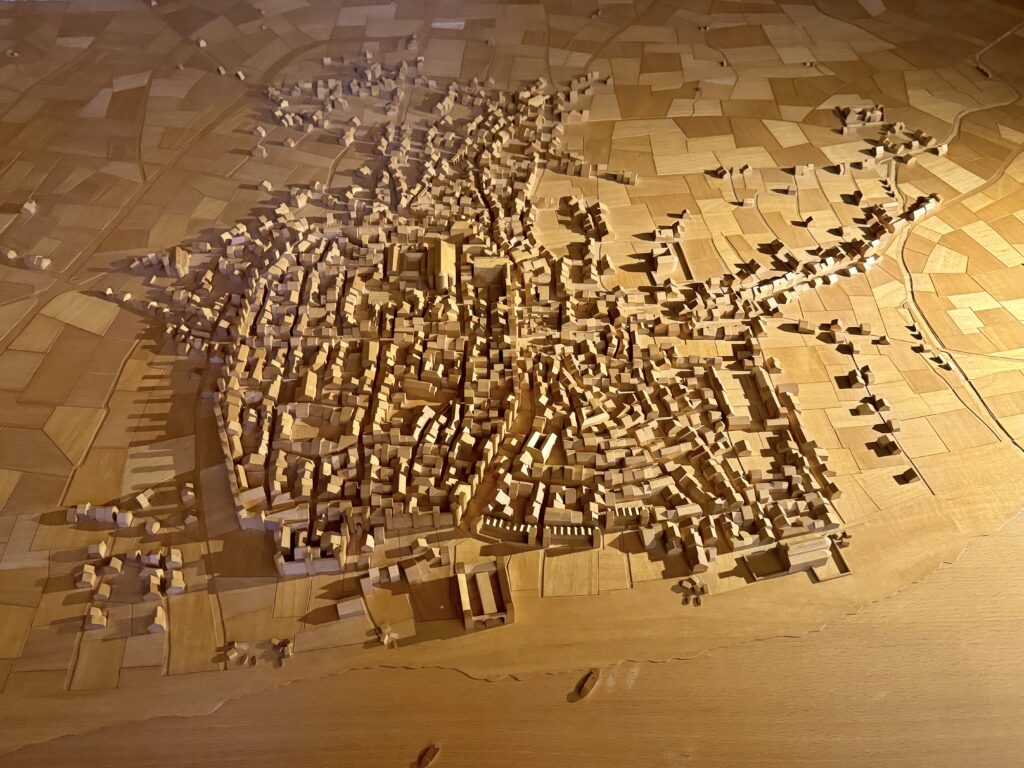
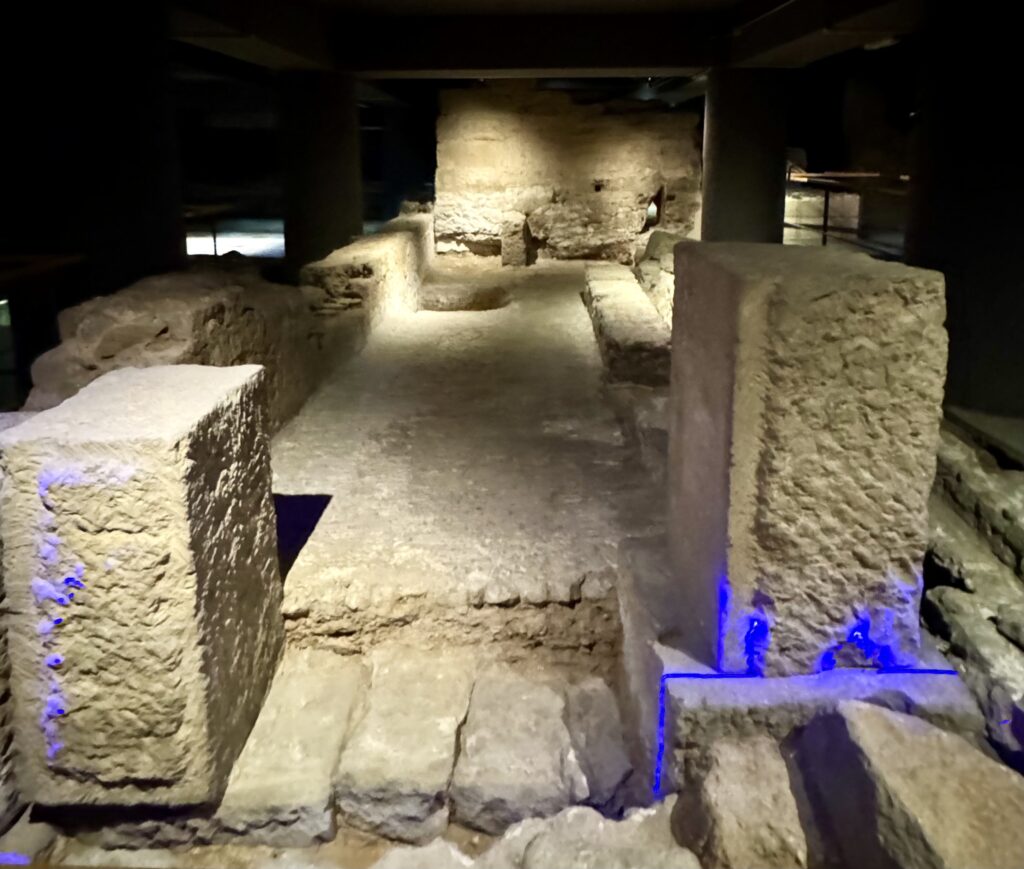
The administration of Barcino fell on an assembly of notable citizens and elected magistrates, the duumvirs and the aediles.
When difficult times arrived for Rome, the city’s walls were reinforced and it was able to survive the crises.
Christianity reached Barcino at the beginning of the 4th century. At first, it was practiced privately among the common people.
As it gained popularity and was embraced by the upper classes, this led to the construction of dedicated religious buildings.
From the 5th and 6th centuries, building took place on top of Barcino and the remains of the ancient city were buried.
The ancient city was discovered and excavated in 1931.
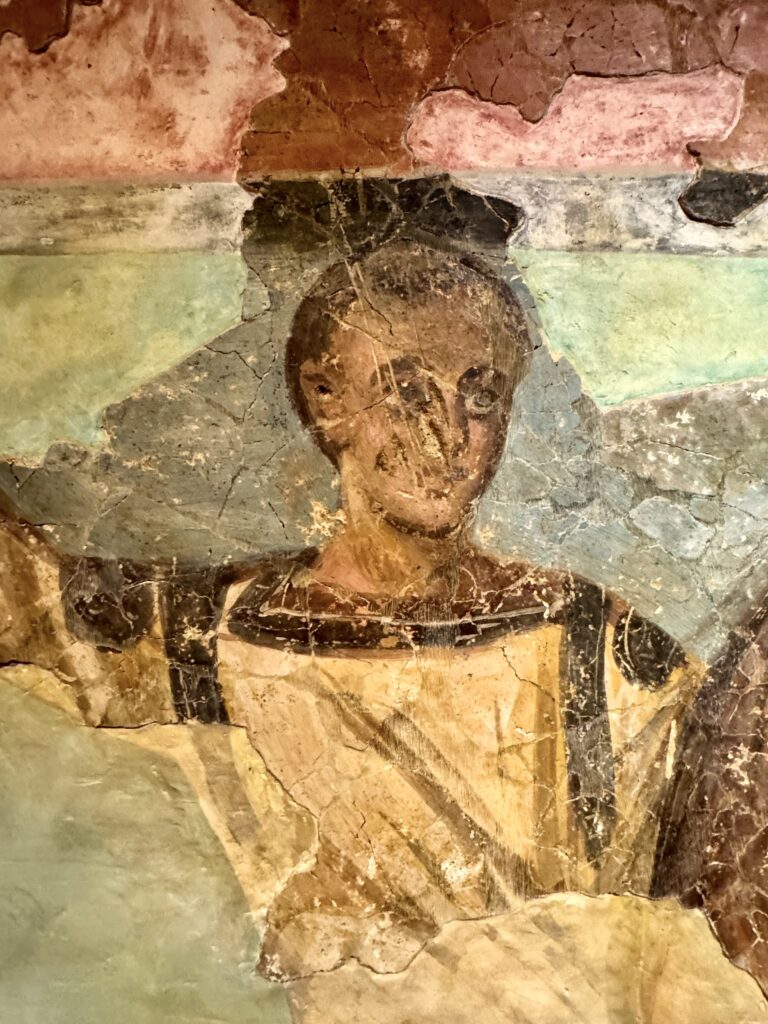
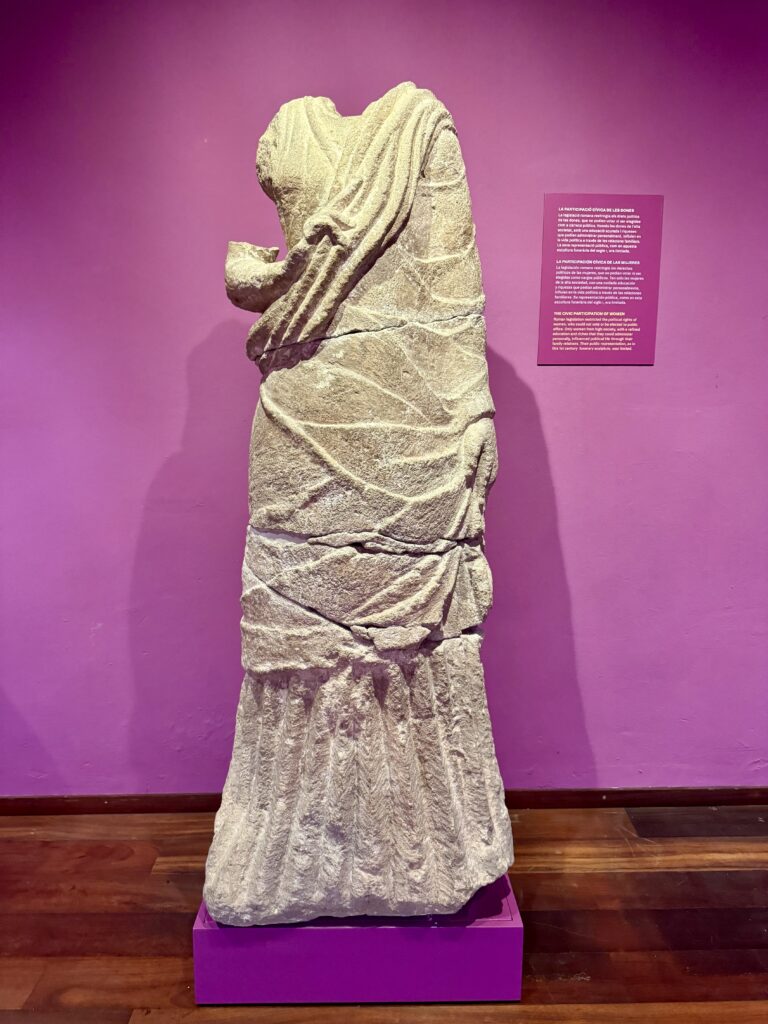
Barcelona History Museum: What To See
Here are some of the highlights of a museum visit:
Roman Artifacts
From the ticket office, you pass into a display area dedicated to the ancient history of Barcino.
There are a handful of Roman sculptures, wall paintings, and household items.
There’s also an audiovisual presentation you can listen to.
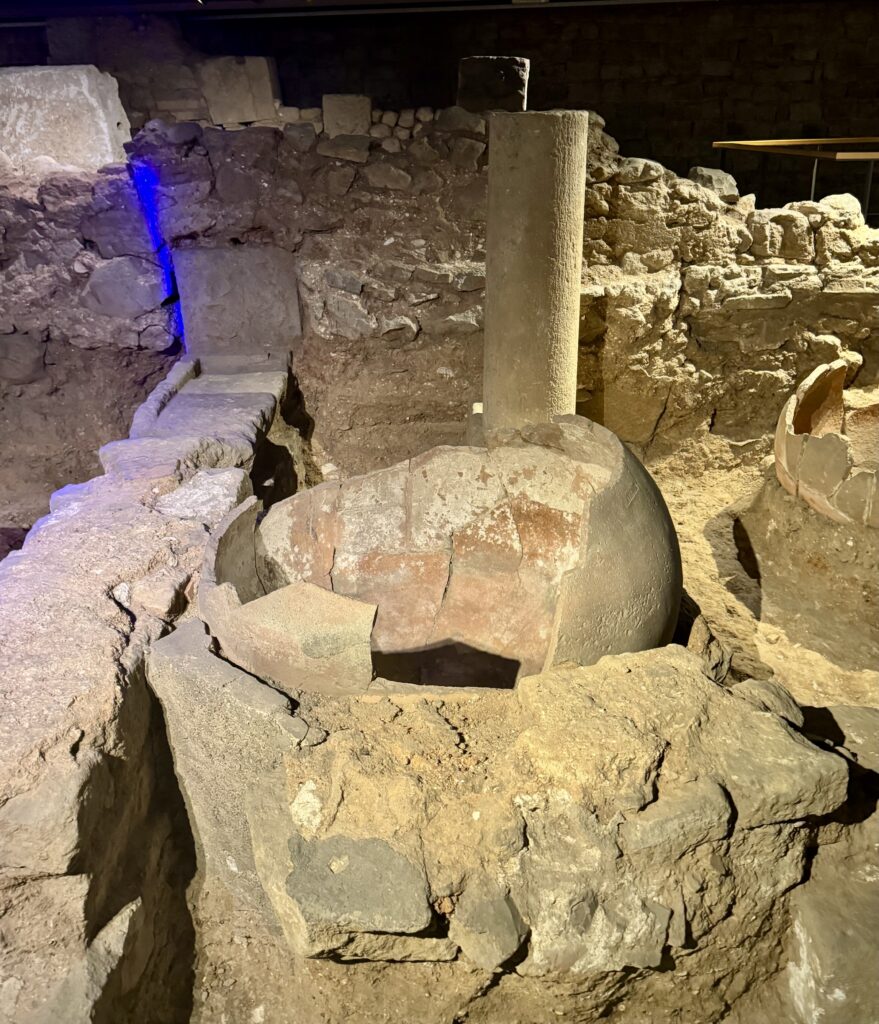
Excavations
Take the elevator down from the display area to explore the Roman excavations.
You’ll step back in time, seeing how the city of Barcino evolved from the 1st century B.C. to the 6th century A.D.
Walk along a glass pathway that offers a glimpse of ancient streets and buildings.
Start by tracing a path that ran alongside the city wall, leading you to the remains of a 4th-century tower.
Next, enter a small museum space displaying a model of a Roman patrician house reconstructed from archaeological findings, busts, and pottery.
Exhibits confirm the magnitude and luxury of ancient Barcino.
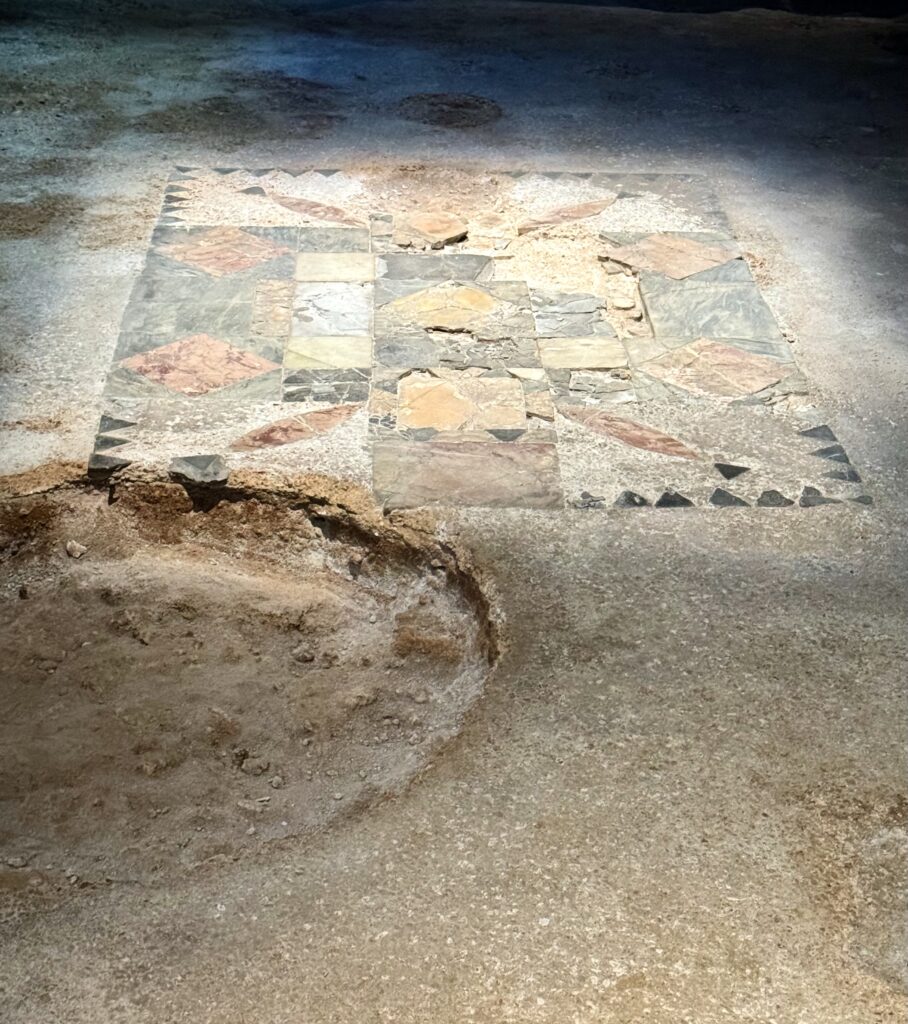
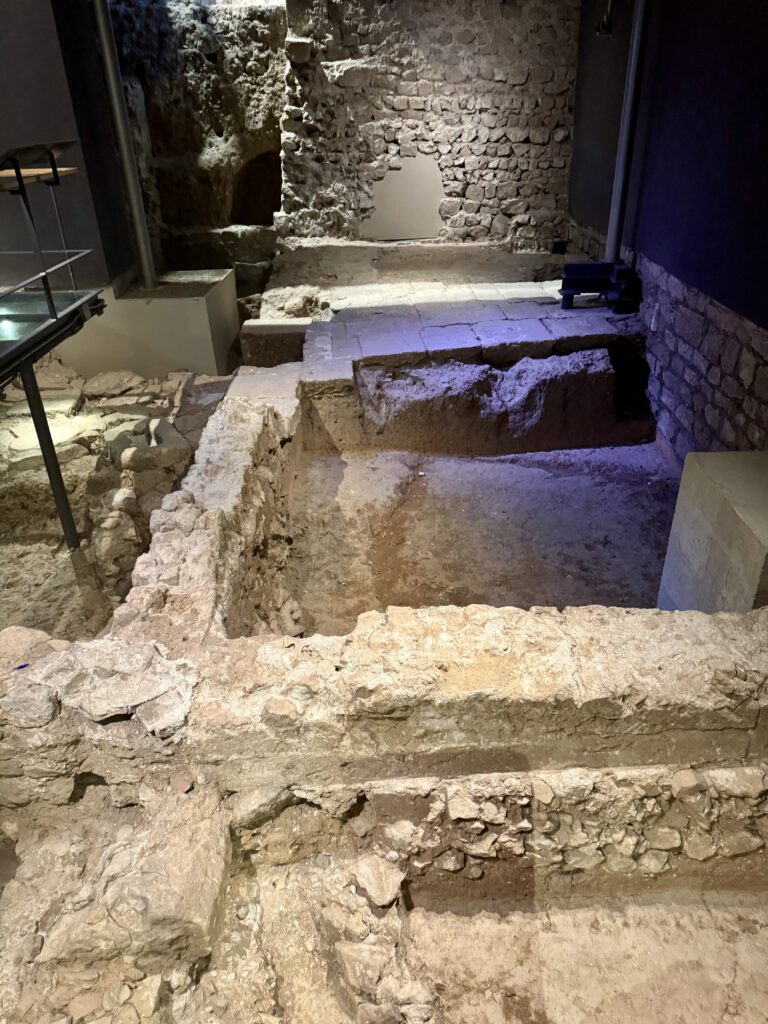
Continue through the ruins of ancient laundries, dye shops, and a cold water pool, part of a larger public bath complex.
You’ll then walk down Carlo Minor, a bustling main street lined with taverns and shops.
The tour reveals parts of the town dedicated to producing salted fish and garum. The latter was a popular ancient sauce made from fish innards, displayed in large storage vats called dolia.
Follow the path past remains of an early church dating from the 4th to 7th century and a site used for wine making. The journey concludes along the walls of a 7th century Visigothic bishop’s palace.
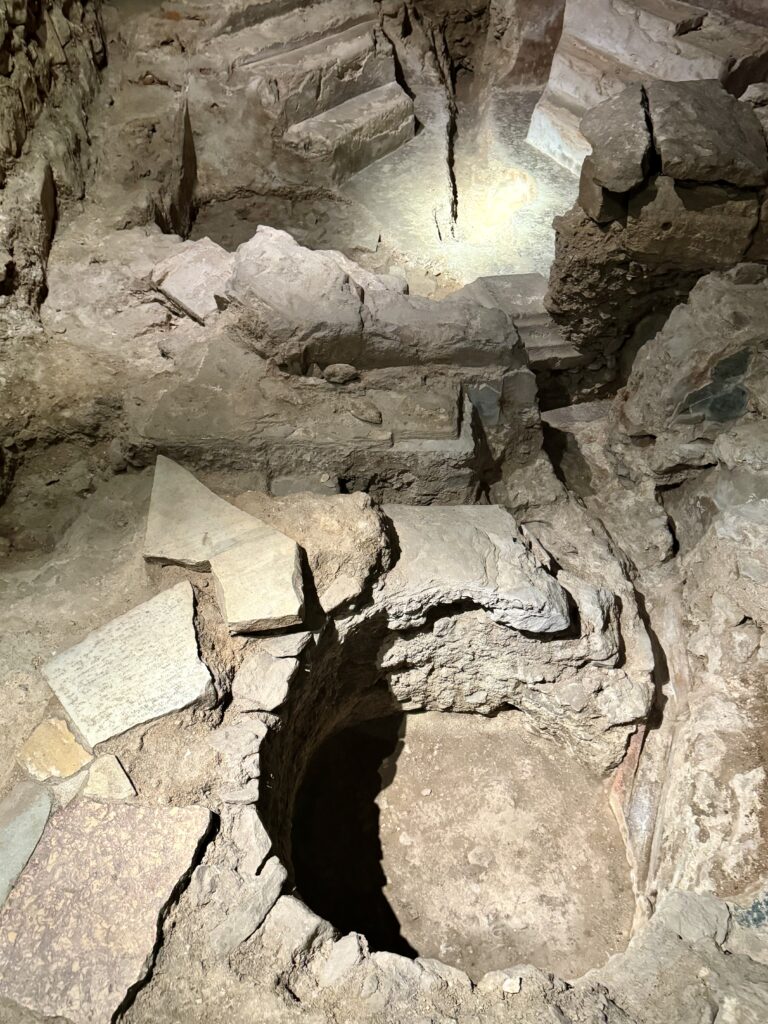
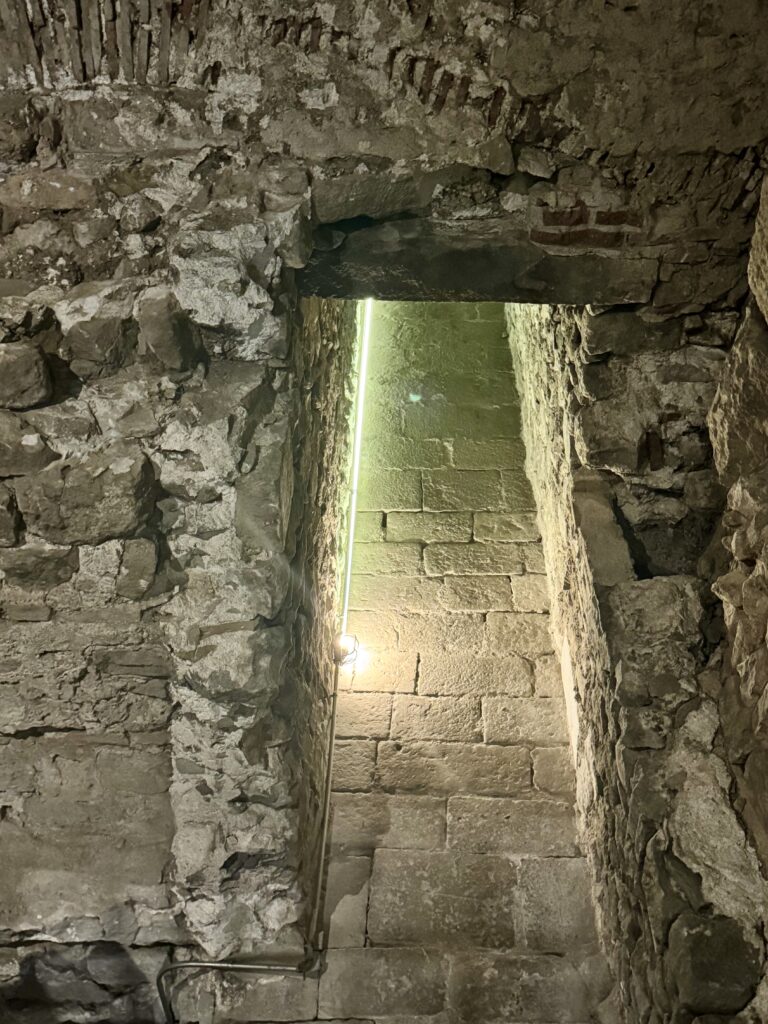
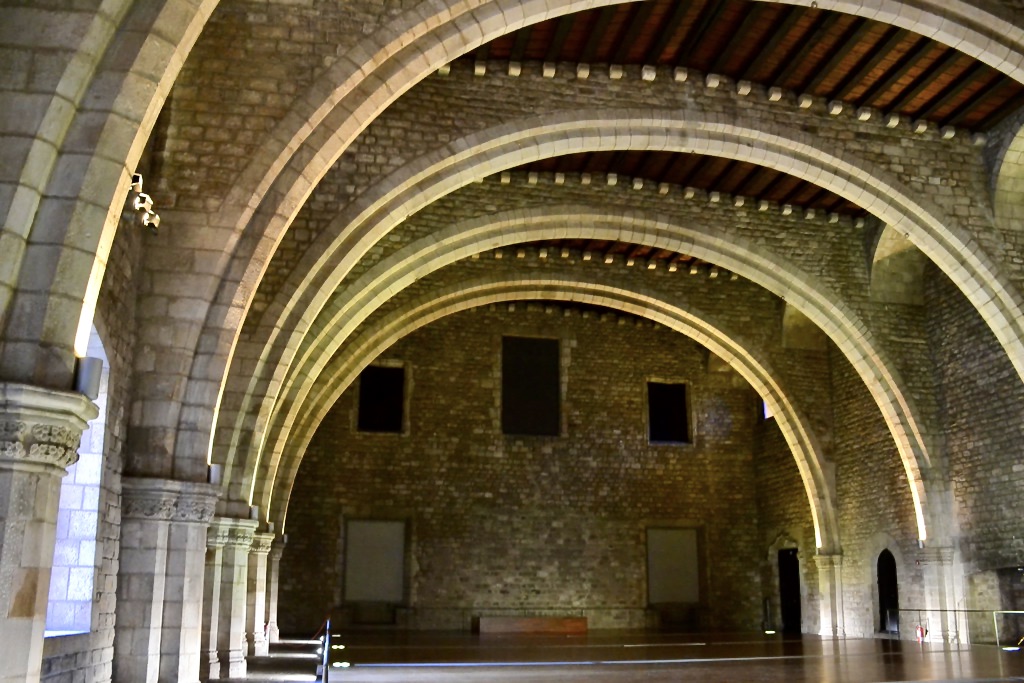
Next, ascend ramps to the royal palace, entering high vaulted halls that now display medieval Barcelona artifacts and 13th century frescoes.
You’ll find yourself in a hall between two significant rooms: the Saló del Tinell and the Royal Chapel of Saint Agatha.
Visit the Saló del Tinell first.
This impressive Catalan Gothic room was once a throne room and reception hall. It features 50 foot high vaults and flying buttresses.
This is where, according to legend, Ferdinand and Isabella received Columbus after his first voyage to hear about his discoveries
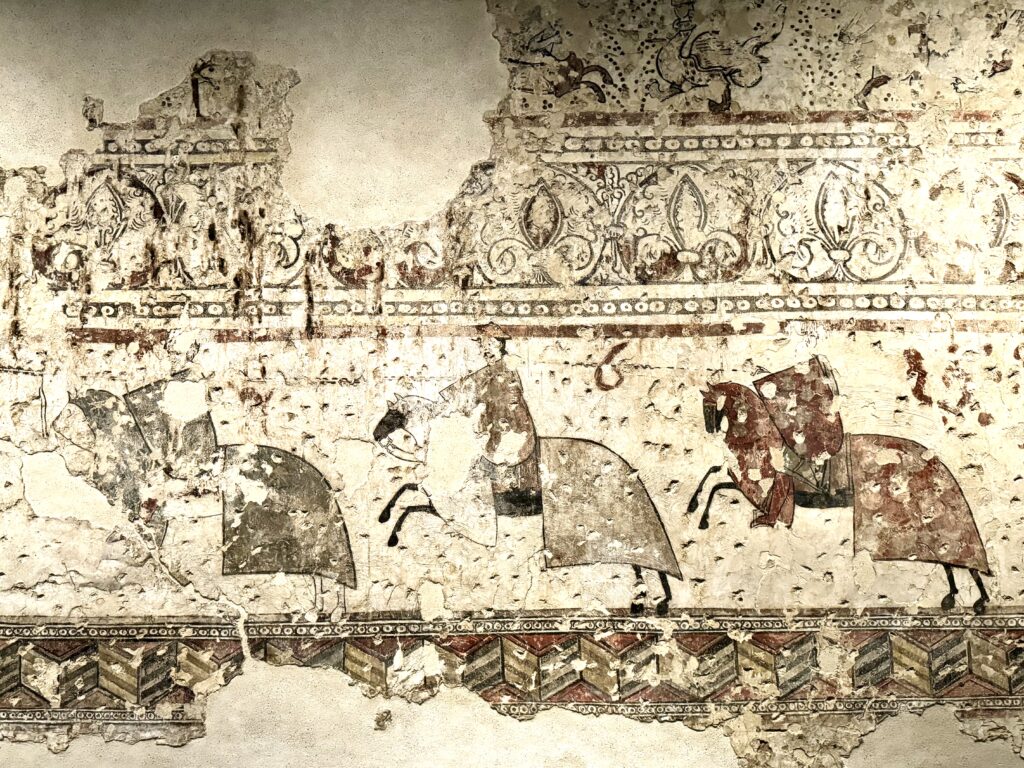
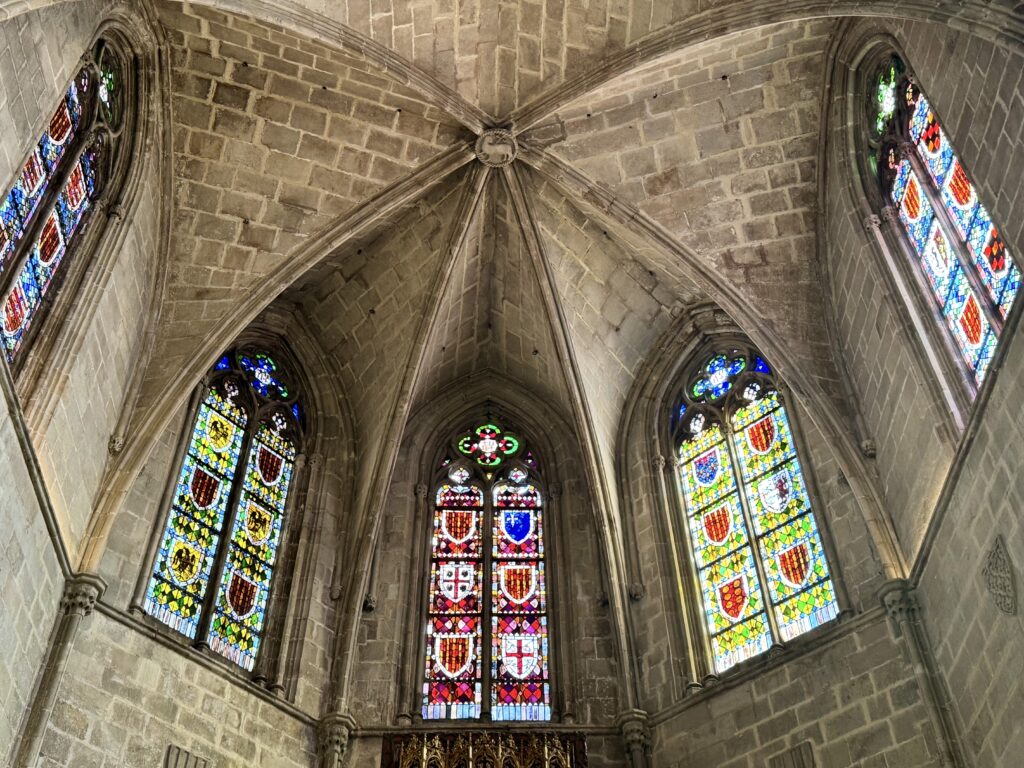
Recently discovered medieval murals here depict King Jame’s conquest of Mallorca.
Finish your visit at the Royal Chapel, a stunning example of single nave Gothic construction. It was built by King James II at the beginning of the 14th century.
Jaume Huguet painted the altarpiece. It showcases the exquisite detail typical of Spain’s International Gothic style.
This hall is sometimes used for temporary exhibitions. So, there may be an extra change to enter.
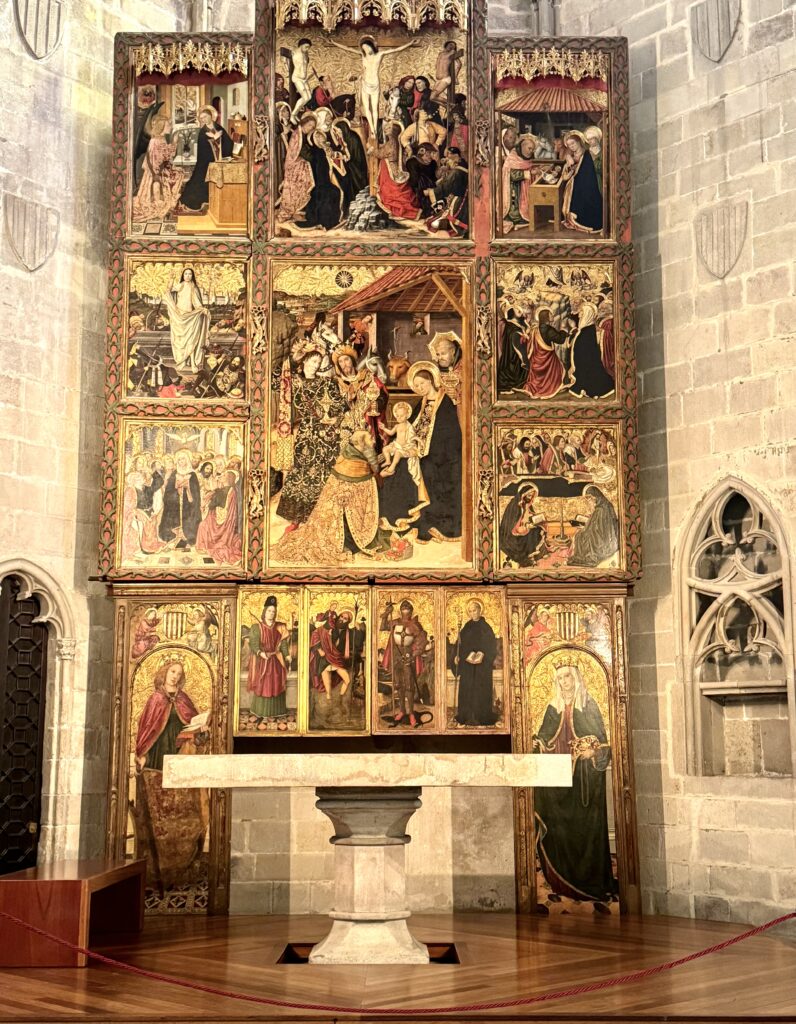
Practical Guide & Tips For The Barcelona History Museum
Address: Placa del Rei
Hours: Tuesday through Saturday from 10:00 am to 7:00 pm. Sunday open until 8:00 pm. Closed Mondays.
Tickets: 7 euros. Free admission with the Barcelona Card.
Pro Tips:
You can get an audio guide, but it’s rather dry and clinical and only covers the Roman ruins. There is plenty of explanatory signage in English if you prefer.
Depending on your interest in Roman ruins, I would plan to spend about 2 hours at the museum.
There is no air conditioning, so it can be hot in the Roman ruins section.
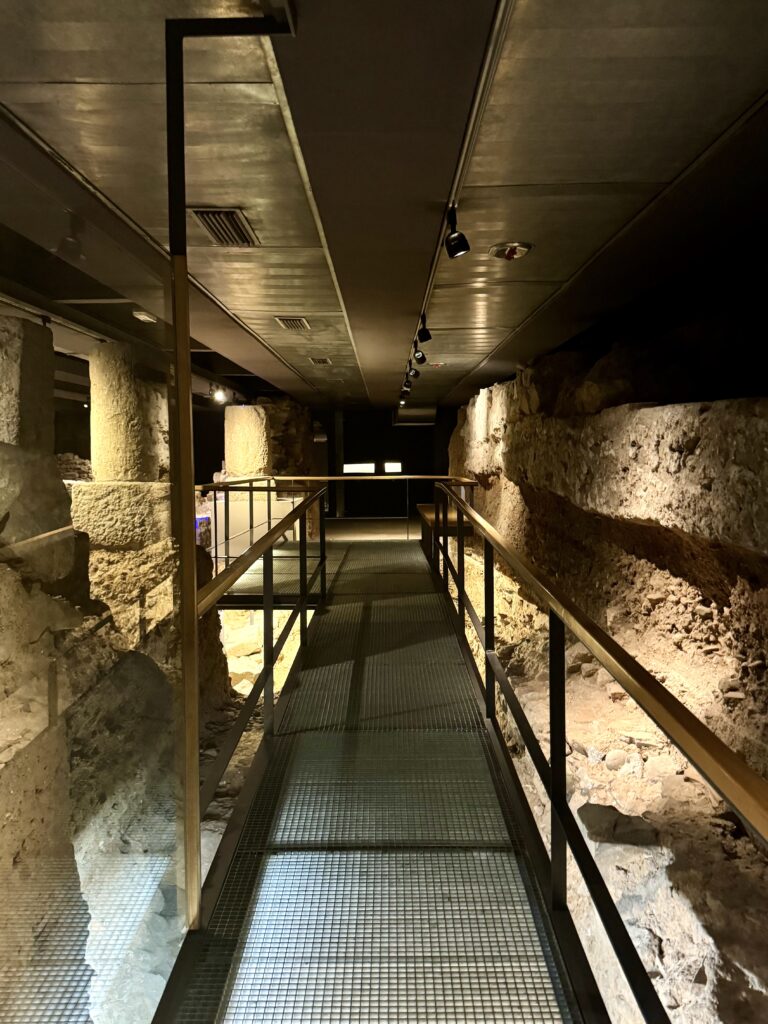
The museum also manages the Temple of Augustus, just a few minutes away.
This site features the remnants of a Roman temple dedicated to Emperor Augustus, remarkably preserved within a medieval building.
I hope you’ve enjoyed my guide to the Barcelona History Museum. You may find these other Barcelona travel guides useful:
- 1 day in Barcelona itinerary
- 3 days in Barcelona itinerary
- what to do in the Gothic Quarter
- best museums in Barcelona
- hidden gems in Barcelona
- landmarks in Barcelona
- guide to Sagrada Familia
- guide to Casa Batllo
- guide to La Pedrera
- guide to Palau Güell
- guide to architecture in Eixample
Pin it for later.

